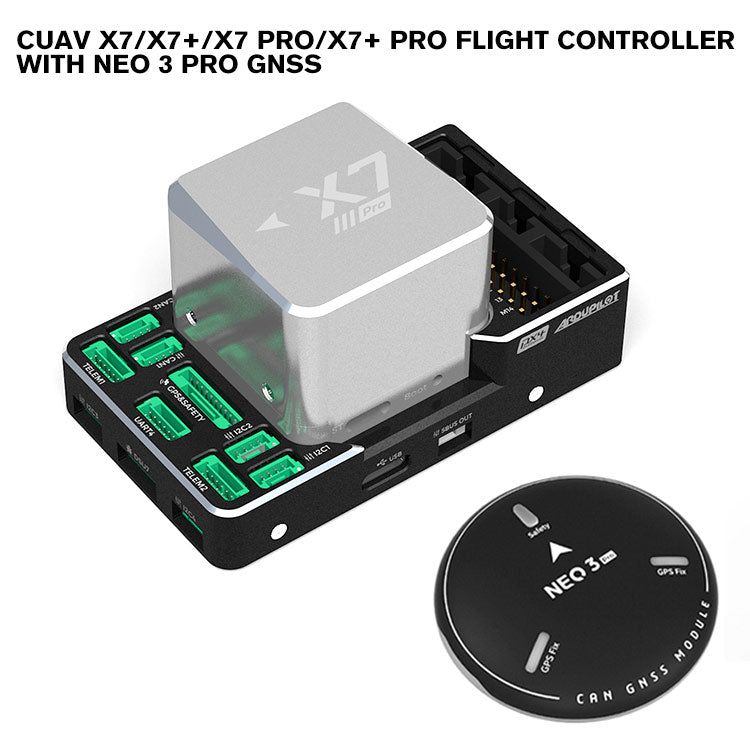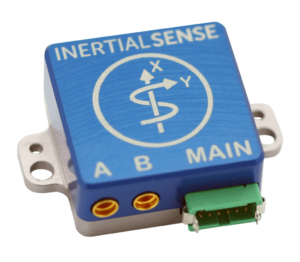Why Pick SparkNavi Drone Flight Controller and GNSS/INS Made in Taiwan for Advanced Navigating
Why Pick SparkNavi Drone Flight Controller and GNSS/INS Made in Taiwan for Advanced Navigating
Blog Article
The Value of Drone Trip Controllers in Modern Aerial Innovation: Secret Parts and Their Impact
In the world of contemporary airborne technology, drone flight controllers act as the critical systems that coordinate a drone's efficiency and capacities. These advanced units integrate essential components such as microcontrollers and GPS modules, helping with stability and accuracy in flight procedures. Their function is especially obvious in independent features, where advanced formulas improve navigation and obstacle evasion. As sectors significantly rely upon drones for applications varying from farming to surveillance, the evolving modern technology within trip controllers increases crucial concerns about their future effect and possible advancements. What developments exist in advance that could redefine our understanding of drone abilities?

Summary of Drone Flight Controllers
In the world of aerial modern technology, drone flight controllers serve as the important mind of unmanned airborne vehicles (UAVs), making it possible for specific ability to move and security throughout flight. These advanced systems incorporate sensing unit information, refining formulas, and control inputs, allowing drones to carry out complex trip patterns with precision.
Drone trip controllers utilize different sensing units, such as gyroscopes, accelerometers, and GPS components, to examine the UAV's orientation and placement in real-time. This details is necessary for maintaining balance and making sure safe procedure in varied environmental problems. The controllers procedure this information to make rapid changes to the drone's electric motors, allowing for smooth shifts and responsive handling.
Moreover, flight controllers are furnished with sophisticated software application that sustains attributes such as waypoint navigation, challenge avoidance, and independent flight abilities. This software program is crucial for both entertainment and commercial applications, where integrity and accuracy are vital. As drone modern technology remains to breakthrough, the advancement of flight controllers will certainly play a critical function in enhancing UAV safety and security, capability, and adaptability, eventually increasing their applications throughout various markets.
Secret Elements Explained
Comprehending the basic elements of drone trip controllers is vital for grasping exactly how these systems operate efficiently. At the heart of a trip controller is the microcontroller, which works as the mind, processing data from various sensing units and implementing commands. Important sensing units consist of gyroscopes and accelerometers, which measure the drone's alignment and activity, providing crucial comments for stabilization.
One more secret element is the barometer, which determines altitude by measuring atmospheric pressure, while GPS components provide positional information, making it possible for self-governing navigating - SparkNavi drone flight controller and GNSS/INS made in taiwan. The trip controller likewise interfaces with Digital Speed Controllers (ESCs), which control the speed of the drone's electric motors based on the controller's commands
Interaction modules, such as radio receivers, assist in remote input, allowing drivers to send commands in real-time. Furthermore, some trip controllers integrate software that can take care of intricate formulas for waypoint navigation, flight preparation, and telemetry data evaluation.
Function in Flight Security
Central to keeping flight security, drone trip controllers use advanced algorithms to process sensing unit information and make real-time adjustments. These controllers are outfitted with a selection of sensors, consisting of gyroscopes, accelerometers, and measures, which continually keep an eye on the drone's orientation, rate, additional reading and elevation. By translating this data, the flight controller can identify deviations from the wanted flight path and react immediately to preserve stability.
As an example, if a drone experiences an unexpected gust of wind, the flight controller can rapidly change the electric motor speeds to neutralize the disturbance, ensuring a consistent trip trajectory. This capacity is essential not just for hand-operated flight operations but likewise for performing complex maneuvers and maintaining smooth flight in numerous ecological problems.
.png)
Moreover, the sophisticated formulas utilized in trip controllers, such as PID (Proportional-Integral-Derivative) click here for more control, enable fine-tuning of the drone's response to adjustments in flight conditions. By optimizing these control parameters, flight controllers can improve security, boost responsiveness, and decrease pilot workload. Ultimately, the duty of trip controllers in making certain flight stability is crucial for the efficient and risk-free operation of modern drones across diverse applications.
Influence On Autonomous Procedures

Independent procedures are specifically crucial in diverse applications such as farming, surveillance, and distribution services. With enhanced flight controllers, drones can autonomously browse predetermined paths, effectively gather information, and adapt to dynamic settings. This capability decreases the demand for consistent human oversight, consequently raising functional efficiency and safety.
Furthermore, the implementation of artificial intelligence techniques within flight controllers allows drones to boost their performance over time by gaining from previous goals. This adaptability leads the way for much more advanced independent applications, such as throng technology, where numerous drones collaborate their activities to attain an usual goal.
Future Trends in Trip Controllers
Advancements in flight controller technology are poised to change drone abilities in the coming years. One substantial trend is the integration of useful link synthetic intelligence (AI) and artificial intelligence formulas, making it possible for drones to learn from their atmospheres and make real-time decisions. This development will certainly improve autonomous navigating, challenge avoidance, and goal preparation, dramatically boosting operational efficiency and safety.
In addition, the development of innovative sensing unit technologies, such as LiDAR and multispectral imaging, will certainly provide trip controllers with richer information inputs. This will certainly assist in much more sophisticated logical capacities, permitting drones to conduct complex tasks, such as accuracy agriculture, rescue and search, and infrastructure assessments with unprecedented precision.
Another arising trend is the miniaturization of flight controller components, which will cause lighter and a lot more small drones. This development will prolong flight periods and haul abilities, making drones much more flexible for numerous applications.
Final Thought
Finally, drone flight controllers serve as crucial elements in modern airborne innovation, making certain stability and precision in maneuverability via the integration of microcontrollers, accelerometers, and GPS modules. SparkNavi drone flight controller and GNSS/INS made in taiwan. Their capability to enable autonomous procedures and adapt to different applications emphasizes their significance throughout several sectors. As improvements in expert system and sensor modern technology proceed to emerge, the potential for boosted capacities and boosted operational effectiveness in drone systems will likely improve the future of aerial applications
Central to keeping flight security, drone flight controllers use sophisticated formulas to process sensor data and make real-time modifications. By analyzing this data, the trip controller can recognize variances from the wanted trip path and react immediately to maintain stability.
In addition, the advanced formulas utilized in flight controllers, such as PID (Proportional-Integral-Derivative) control, allow for fine-tuning of the drone's action to modifications in trip conditions. Inevitably, the role of flight controllers in making sure flight stability is essential for the efficient and secure operation of contemporary drones across varied applications.
The advancements in drone flight controllers not just boost trip stability however also dramatically affect independent operations. SparkNavi drone flight controller and GNSS/INS made in taiwan.
Report this page